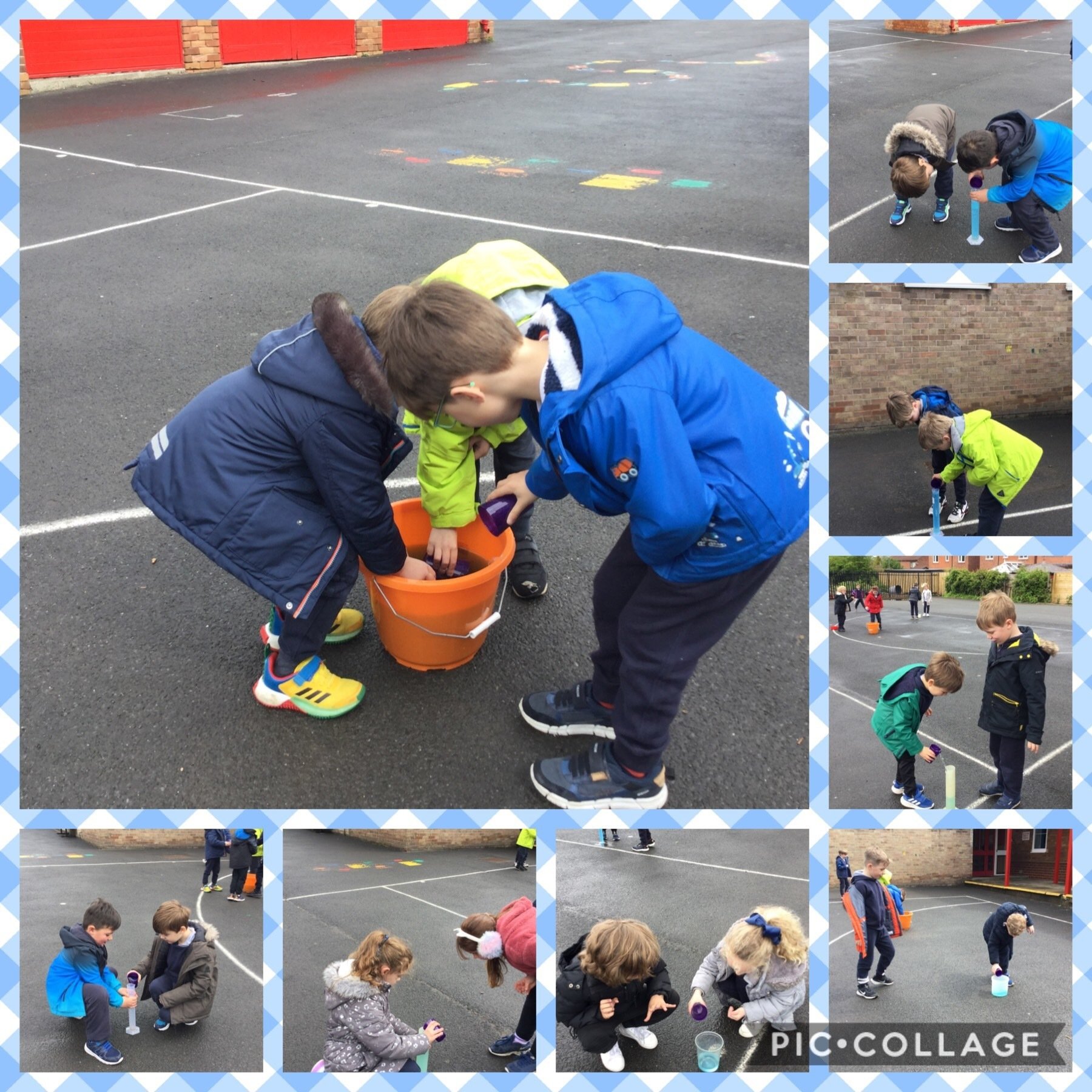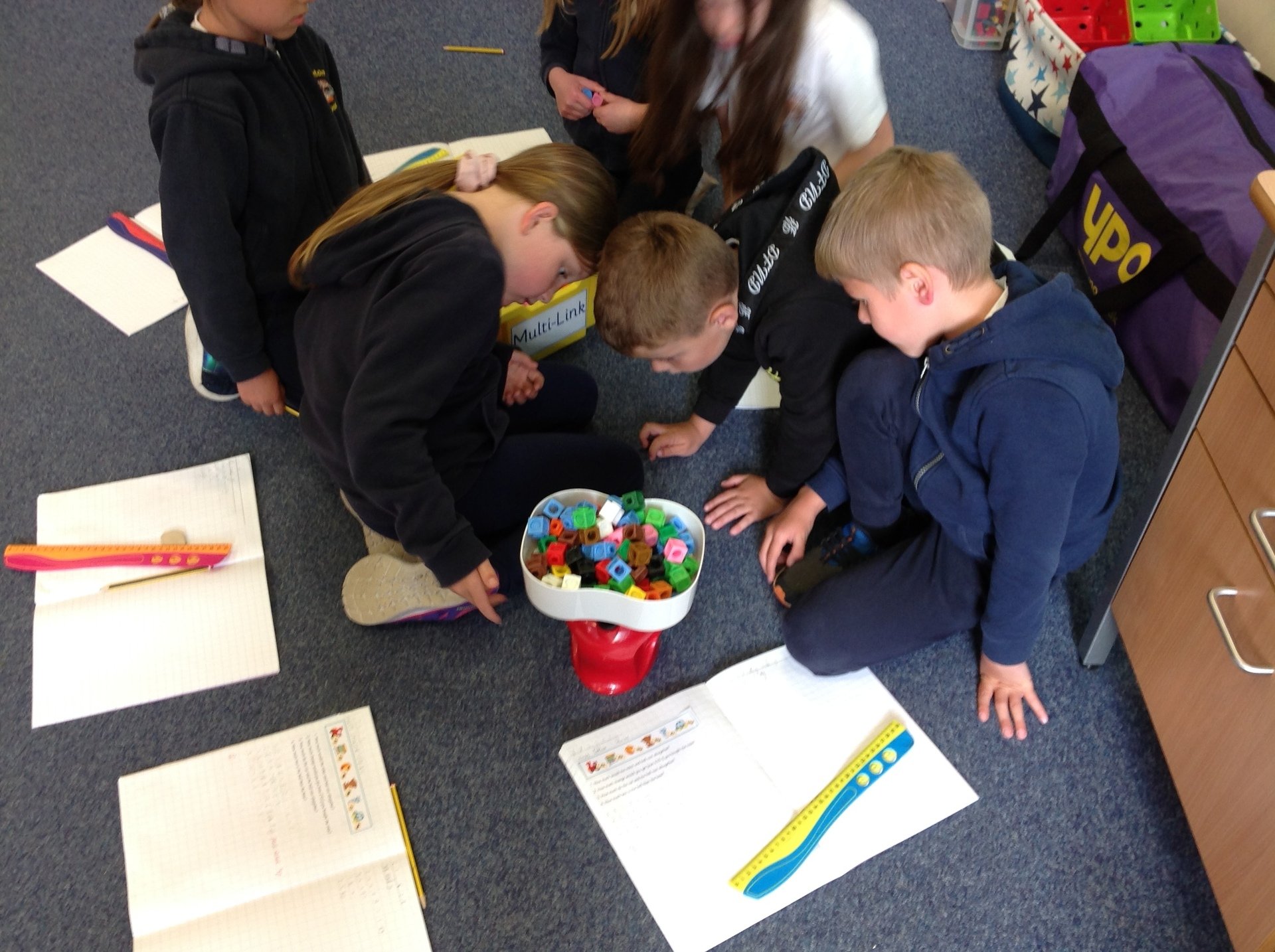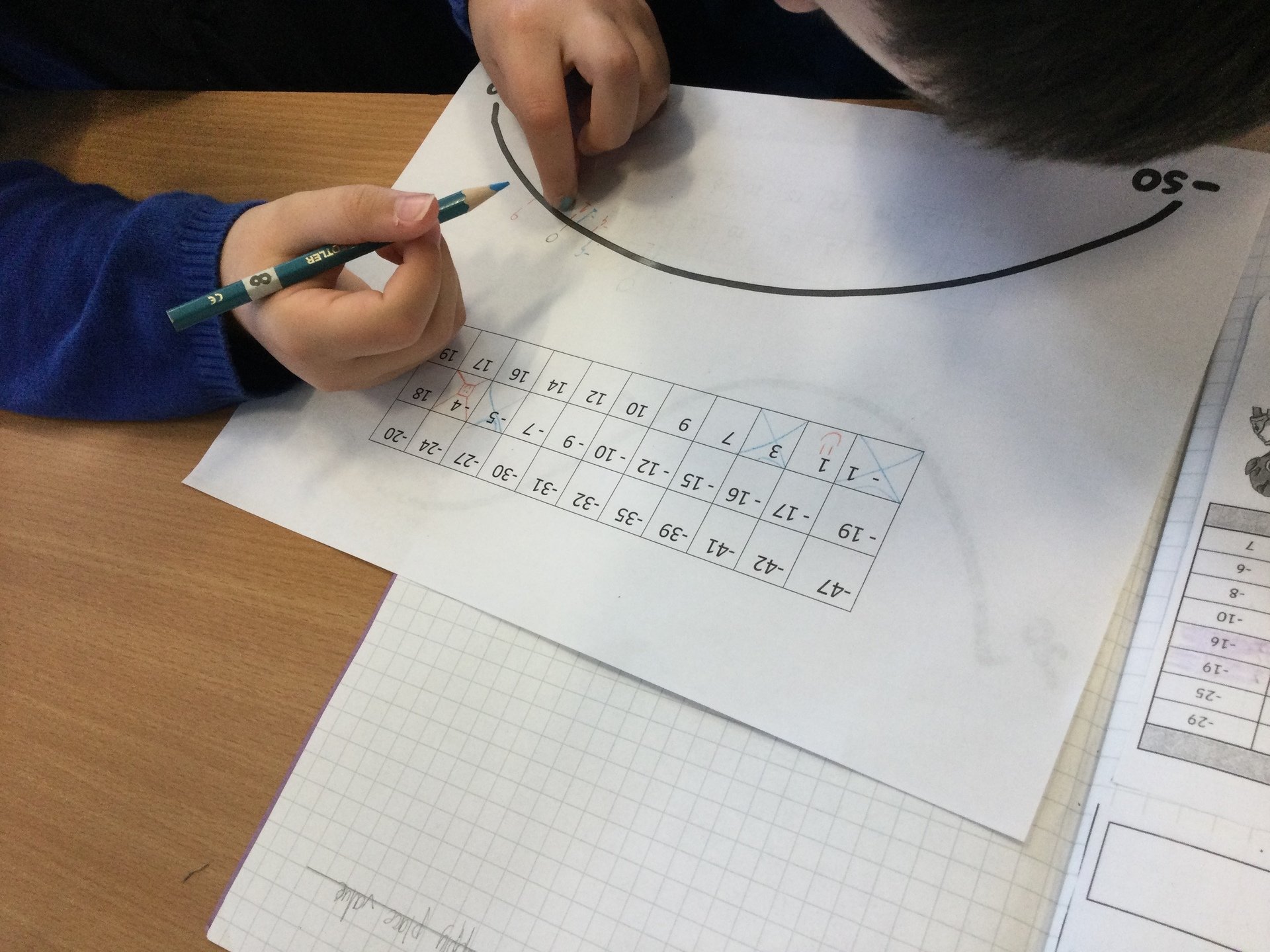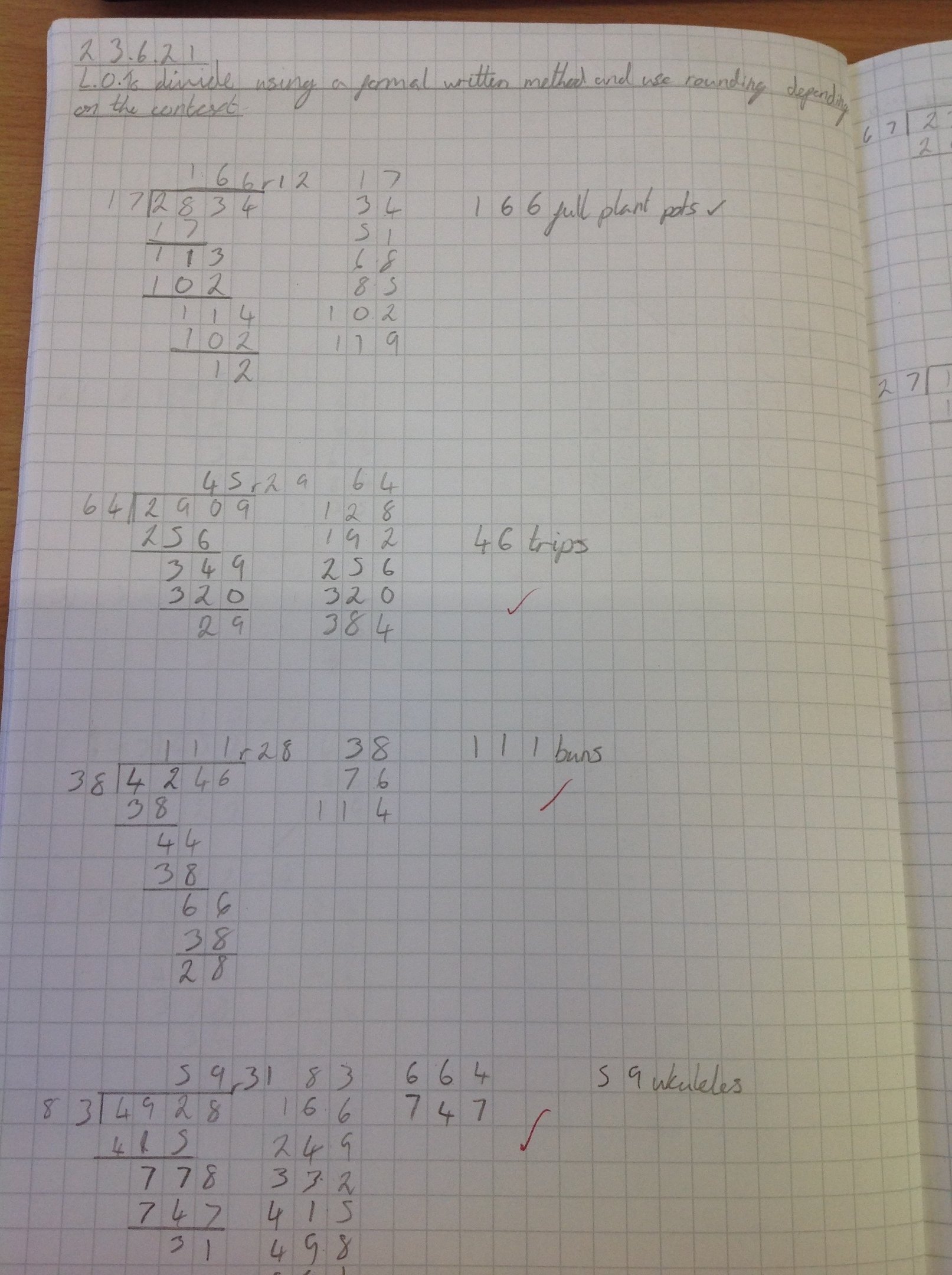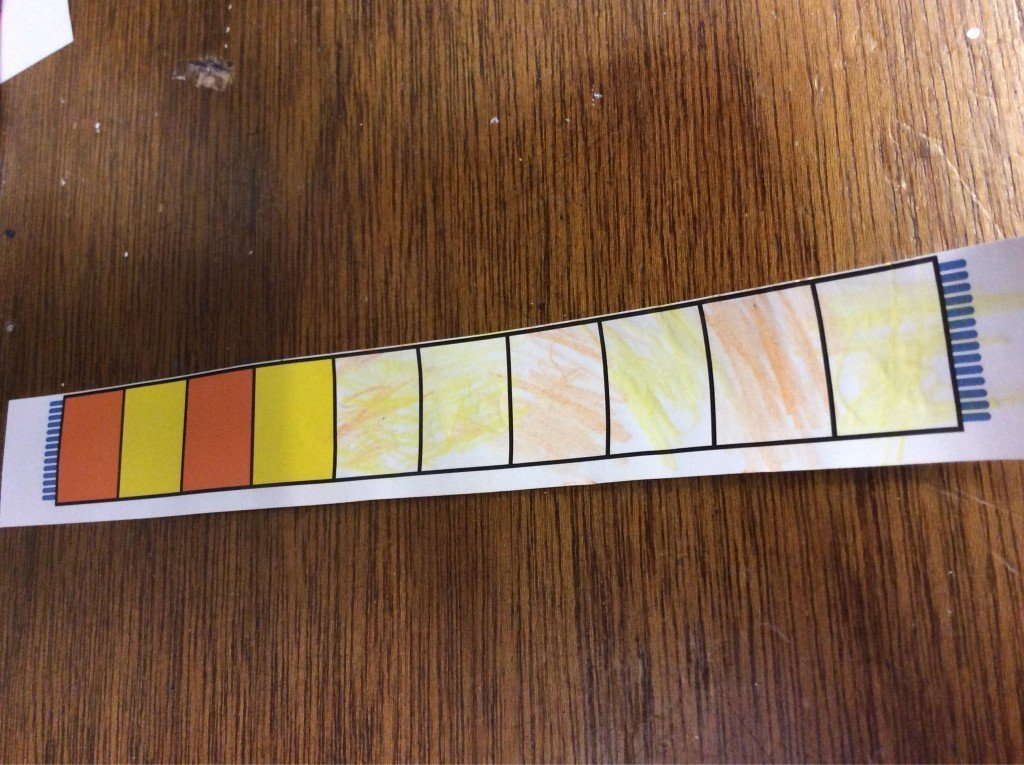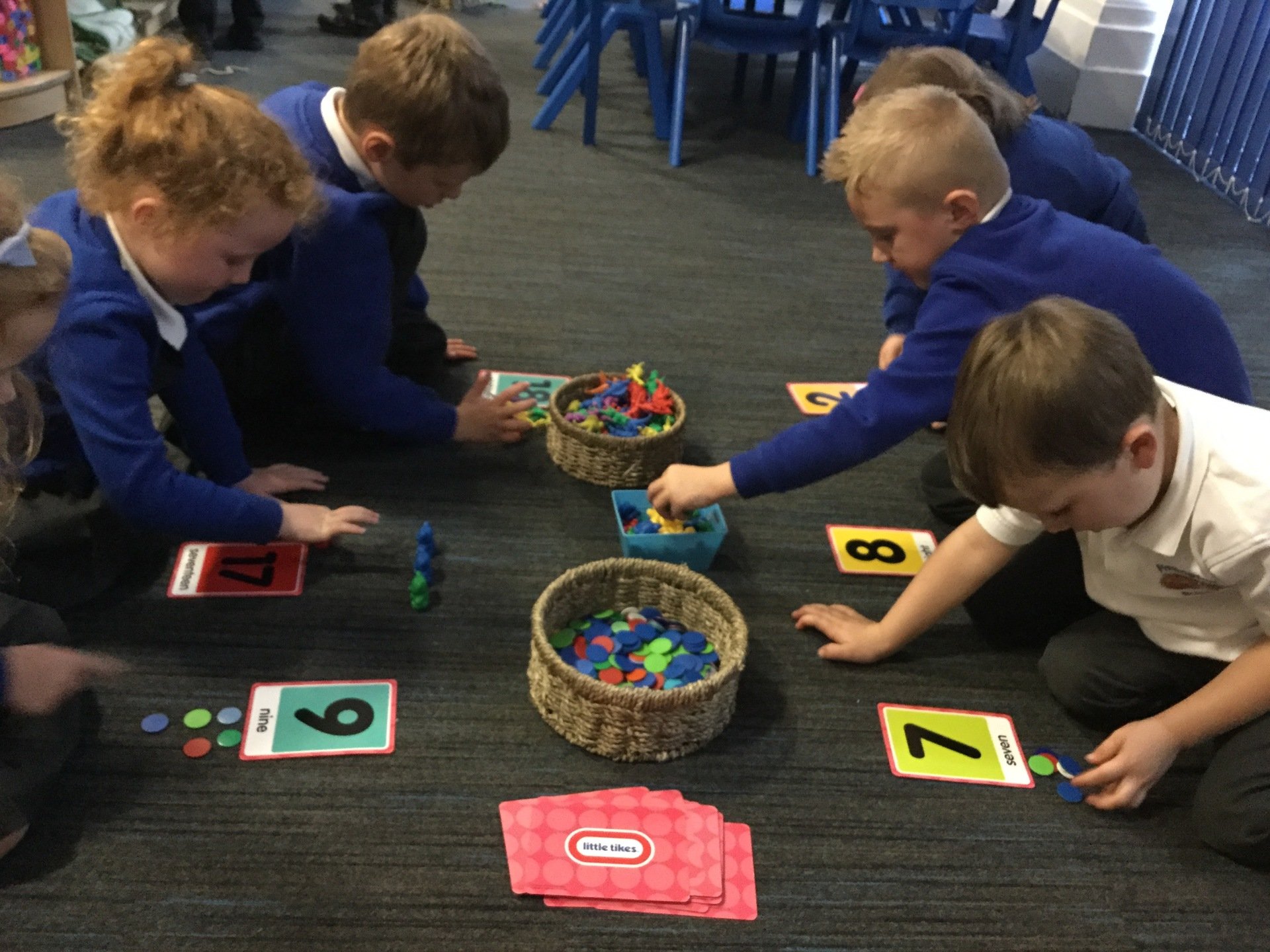This page is under construction and will be updated throughout the school year...
Maths at Pittington
Summer Term 2021
Nursery – Ready for Lift off!
In Nursery we have been practising and perfecting our counting skills. We are now counting beyond 10 and many of us are able to write the numerals to 10 to represent our counting too. We have enjoyed practising matching 2D shapes using a ‘Shape Monster’ game in the interactive whiteboard. We have been making lots of comparisons of height, weight, length and size. We sorted some of objects from the role play area into groups of big, medium and small and even explored alternative words to use to describe size too. We used cubes to measure how big some sunflowers were and to record our answers. In our topic about space we enjoyed pretending to be astronauts in rockets and blasting off into space. We counted backwards form 10 right down to 0 and blast off! We talked about the patterns on the wings of the butterflies we had in Nursery and discovered that their wings were exactly the same on both sides and learned the word symmetrical. We used paint to make our own symmetrical butterflies.
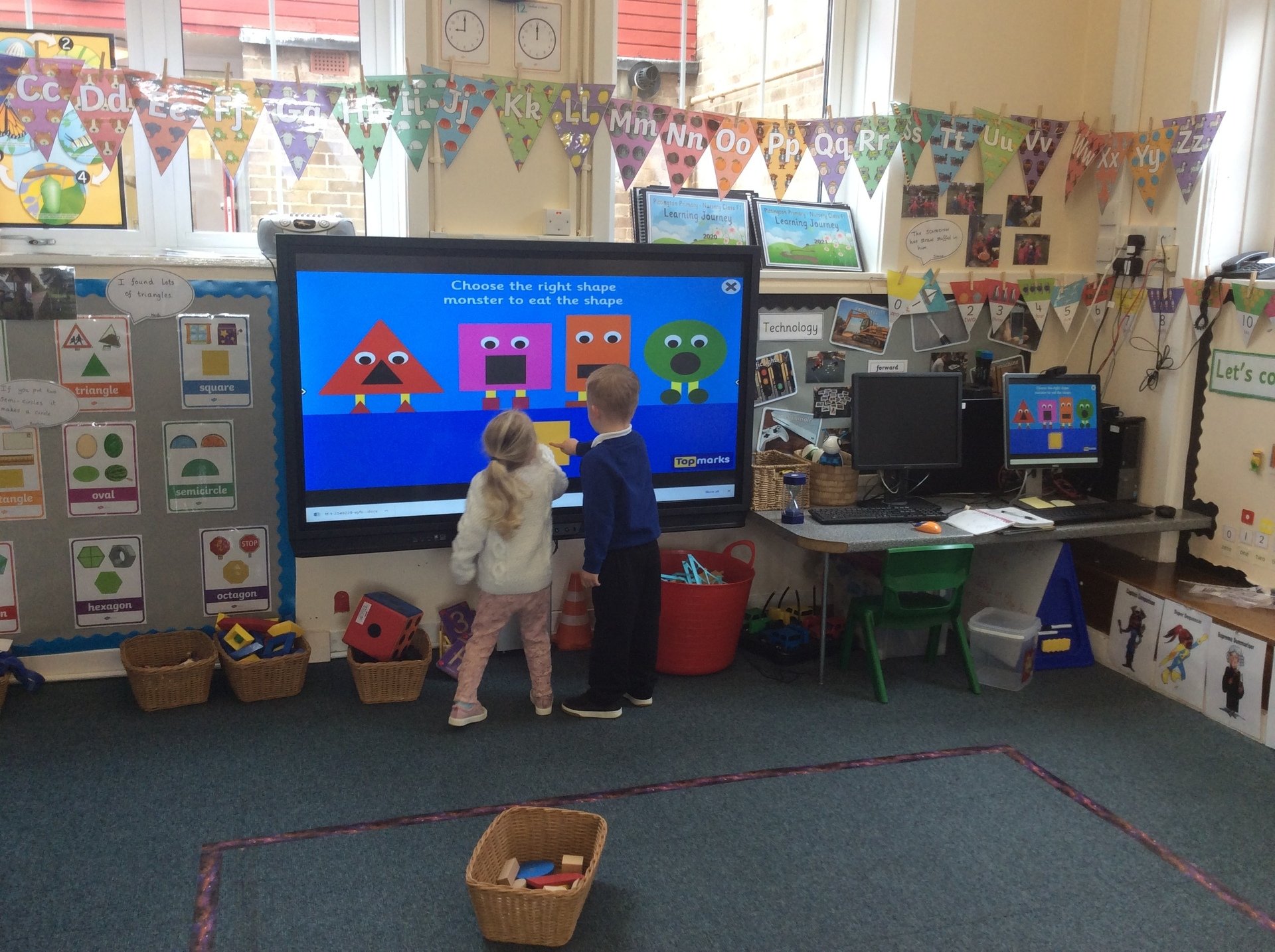 |
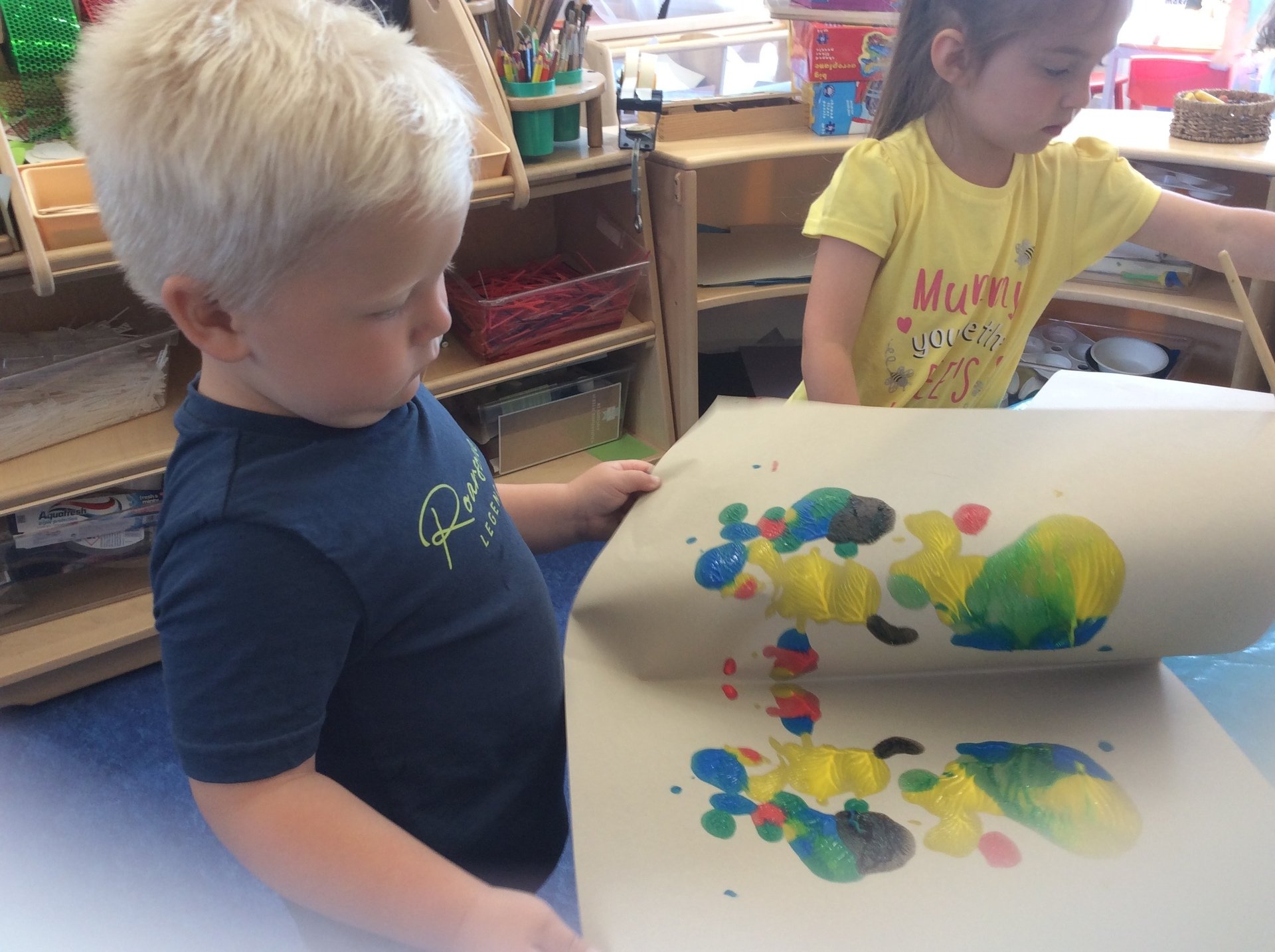 |
Reception – Time to learn
We have been looking at the features of a clock and how to tell the time (o’clock).
We explored the hands, where the numbers are positioned on a clock face and we talked about minutes, hours and seconds.
The children have picked this up very quickly and are making their own clocks with moving hands.
 |
 |
 |
 |
 |
Year 1 – Working at Full Capacity
In year one this term we have been learning about multiplication and division. We have shared objects and used physical objects to create arrays so we can use repeated addition to solve multiplication number sentences. We are also very good at counting in 2s, 5s and 10s.
We have been using two tens frames to complete addition and subtraction calculations up to 20 and then extending this to 50. The children have worked hard and can confidently say how many they have in total.
We went outside to learn about capacity and how much liquid a container would hold. Mrs Rowell challenged us to estimate first before finding out how many cups of water each container holds.
In year 1 we have been working hard to learn our pairs of numbers that make 20. We have played lots of pairs games to help us to do this.
Year 2 – Growing Mathematicians
In maths this term we have had a big push on learning our 5 times table. Hit the Button has been fabulous this year with helping us to get faster and faster with recall and every single member of the class has made progress.
We had lots of fun estimating, comparing and measuring the weight of different objects in class and have been learning to convert grams to kilograms. We all quickly learned that we would rather have 1kg of chocolate instead of 1 gram!
In our science work we have been growing sunflowers. Each week we used our maths skills to measure and track their growth. We decided that once the sunflowers grew to over a meter they would be planted in the school grounds for everyone to enjoy.
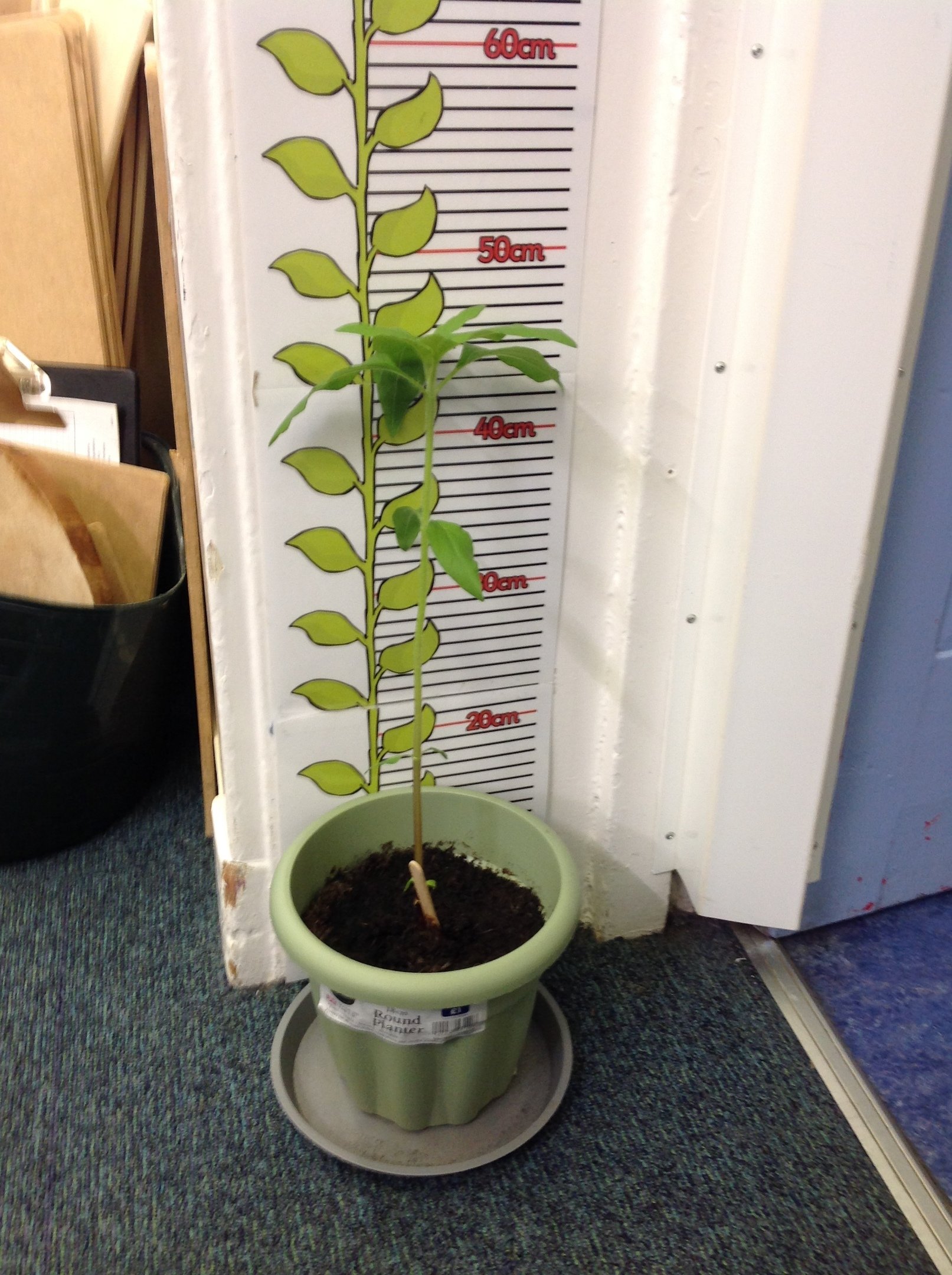 |
 |
Year 4 – Rockdown Relief
 |
 |
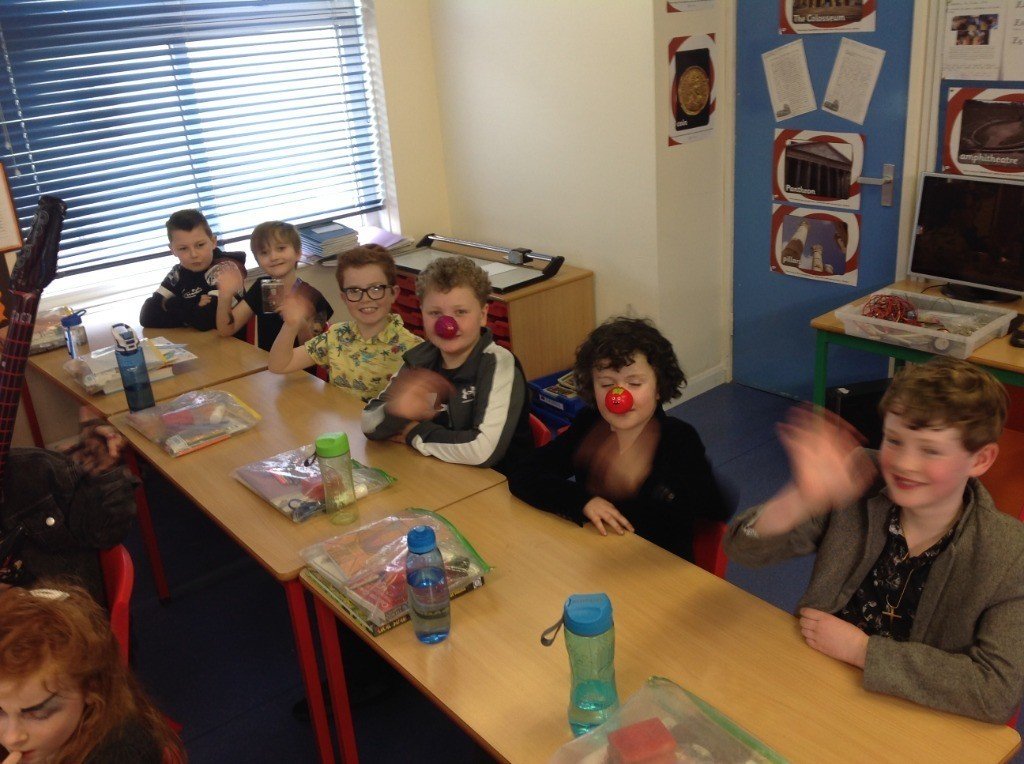 |
The whole school took part in our ‘Rockdown Relief’ times tables competition using Times Tables Rockstars. Children came to school dressed for the part and Year 4 were no exception!
Year 5 – Reasoning to be Cheerful
In Year 5, we have had a very busy time with our maths. This term we have focused upon number and place value, addition and subtraction (including word and reasoning challenges with multiple steps), multiplication and division (including working on prime, square and cubed numbers), measures (converting between metric and imperial and calculating the perimeter of rectilinear shapes), statistics (deducing information from line graphs) and geometry (which has included locating missing angles on a straight line and around a point).
We have explored all sorts of reasoning challenges and have worked really hard on applying our maths skills to these. Additionally, we have also played a range of games and activities to help us to develop our fluency in maths.
Year 6 – Ready for Secondary School? Bingo!
In Maths, Y6 have been very busy!
We have been learning how to find the mean average and we used this in Science to find the mean average of our heart rate when resting then after exercise. We have also spent a lot of time ensuring our formal written methods of addition, subtraction, multiplication and division are accurate ready for secondary school. Take a look at our long division which we used to solve reasoning problems. If there was a remainder, we had to carefully consider if we needed to round the answer down or up.
We have also been finding out about circles and language associated with this. We found that it is not easy to use a compass at first!
As an introduction to reflecting and translating shapes in the four quadrants, we played a quick game of bingo to practise reading the x axis before the y axis.
Autumn Term 2020
Nursery – Shaping up nicely
We are continuing to practise our rote counting every day and are using counting and number songs to help us learn the order of the numbers to 5 and 10. We are using some number rhymes from Communication4all to help us with number recognition and number formation.
 |
 |
The children find the rhymes really helpful when forming numbers. We count the children in Nursery each morning and find the corresponding number on the number line in the classroom. This daily practise has definitely helped all children to progress. In addition to counting we have experienced ordering objects according to their size and we have used the balances for weighing objects allowing us to determine which is heavier or lighter. The children have also enjoyed learning about different shapes which they can see in the Nursery and outside.
We have looked at the shapes of road signs when learning about road safety extending the children’s knowledge of 2D shape in the environment. Everyone has enjoyed using shapes to make pictures and in our Diwali artwork and Rangoli patterns.
Reception – Not just any old patterns
We have been working on recognising patterns. We explored how to make repeating patterns with lots of different things. We used cubes, shells, leaves, shakers and even ourselves!! We also made repeating pattern jewellery.
 |
 |
We have been forming our numbers at every opportunity. The children were challenged to make digits using objects from the classroom…we soon found that some numbers are trickier than other!
We have been learning about the number of days in a week, the number of weeks in a month and the number of months in a year! We looked at all 12 months and put them in order. We all decided that December is a great month for many reasons!
Year 1 - Exploring the value in sorting and sharing.
Place Value - Part Whole Model
The children were introduced to the part whole model cards. Working with their maths partner the children had to roll two dice to generate a number. They then had to write the number in the big circle. The children then counted out this amount of multi-link cubes and split it between the two bottom circles. They then checked their answers by adding the two bottom numbers together to see if the total made the top number.
Sharing into two equal groups
The children were given number cards to sort into two piles, numbers that can be shared equally and ones that cannot. The children worked with their partner to use multi-link cubes to share the card amount into two circles. They then placed the card in the correct pile. Some of the children recognised that all the number that could be shared equally were even numbers.

The children had to sort the dinosaurs and shapes into different categories working with a partner. They were then challenged to think of as many different ways to sort the objects and record them.
Time
Year 1 have been using clocks to explore o’clock and half past time. We completed lots of examples of both reading and writing the time. We also played outside What’s the Time Mr Wolf. The children were amazing at learning time
Year 2 – We have lift off!
We made bauble rockets and had great fun testing them out in science. We used our measuring skills and tape measures to record the distance they travelled.
 |
 |
Year 3 – Rock stars
Year 3 have enjoyed learning how to use the four operations for add, subtract, divide and multiply which were simpler once we remembered to use what we had previously learned about the place of each digit within a number, because then we knew its value.
We continued learning more about fractions, time and shape, but the best time this term was when we got access to the ‘Times Tables Rock Stars’ website, which helps us to practise our multiplication facts. We can use this in class and have access for when outside of school.
Year 4 – A dicey problem
 |
 |
This ‘dicey’ challenge was a real hit with year 4. Children had to generate two numbers with their dice and then subtract the smaller number from the larger using column subtraction. If they got it right they won a point but their partner had to check it was correct first. They did this by using the inverse operation (addition using column method) to check.
Year 5 – A fraction beyond Narnia
In Year 5, the key focus areas within the Spring Term so far have included place value, addition and subtraction, multiplication and division, fractions, time and position and direction. We have looked to develop reasoning and problem-solving skills within all of these areas.
Year 5 have consolidated our addition and subtraction skills and applied these to a number of problems solving and reasoning situations including buying antique furniture – to work alongside our English focus of ‘The Lion, the Witch and the Wardrobe’.
We have also applied the multiplication skills which we developed in Year 4 to be able to multiply by a two-digit number within the formal method of long multiplication.
Within our work on fractions, we have compared and ordered fractions with denominators of the same multiple.
We have accessed a range of problem solving and reasoning work and the children have had the opportunity to demonstrate the application of their skills and their resilience. The children have also enjoyed working on their times table skills on Times Table Rock Stars.
Spring Term 2020
Nursery – Top that!
Children in nursery have been practising counting and one- one correspondence using a range of objects in Nursery and have also started to count the children every morning and record the number on the blackboard. They have measured and compared the heights of all of the children and teachers in Nursery and recorded them on a height chart.
The children have been introduced to some special number rhymes which have helped to both recognise and write numbers successfully.
The class have looked at a clock and used it to identify numbers and tell ‘o’clock’ times whilst playing a game of ‘What time is it Mr Wolf?’ with friends as well as making a pictogram to represent their favourite pancake toppings.
Children have also enjoyed identifying, naming and sorting 2D shapes and looking for shapes around school both inside and outside.
Reception – Anything but snail paced!
 |
 |
 |
 |
Reception children looked at currency and what they may use money for.
The children discussed that money is used to pay for items, money can be earned and money can be saved to add up to more money (some children receive pocket money to spend or save). The children investigated what money looks like and talked about using money in the forms of coins, paper notes and electronic cards.
The children have been challenged to use the different coins to make different values. For example-
2p can be made with a 2p coin or 2,1p coins
5p can be made with a 5p coin or 5, 1p coins etc.
The children were set a challenge for home- How many different ways could you make 10 pence?
Reception also made a class shop to continue our work on coin recognition and calculations.
 |
 |
The class have also looked at presenting information into graphs. They carried out a survey in class and used the collected information to make a pictogram. The children enjoyed talking about their findings.
 |
 |
 |
 |
Giant African land snails came to reception on day (you don’t see that every day!). The children organised a race for our snail guests and talked about why we need a start/ finish line and how a race needs to be organised fairly. Then the class talked about ordinal numbers and how the finishing position depends upon the number of competitors and also looked at writing ordinal numbers up to 5th place.
The children decided the distance to be raced by the snails then made predictions about who would win 1st place.
Sunshine won 1st place
Storm finished 2nd place which was also last place as there were only two snails!
 |
 |
 |
 |
 |
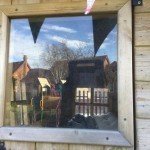 |
Finally, the class have been revising 2D shapes and their properties (before moving onto 3D shapes).
Year 1 – Enjoying outdoor maths.
Year 1 have had lots of enjoyable practical lessons in Numeracy during this term and have even taken some of their learning outside.
The children have explored addition and subtraction within 20, place value, length and height and weight and volume.
The children have worked incredibly hard on their 10, 5 and 2 times tables and this is now shown through their amazing counting skills.
The class have really enjoyed playing a variety of Numeracy games that have helped them remember lots of the important facts and have even come up with some secret class codes to help remember some of the trickier skills.
Year 2 – Perfect practical maths
The classroom was set up in a carousel of weight, measure and capacity with examples of each in everyday objects and the tools used to measure them.
The children worked in pairs to find different ways of making the same amount.
The group were given numbers under 20 and had to represent them using cubes. They each independently created the numbers with representations of tens and ones.
The group spent the lesson using concrete objects to help practise working how “how much more” and “how much less” there was when comparing two groups of objects. This will help the group in future when finding the difference between numbers and comparing information relating to statistics.
Year 3 – Topping the charts
 |
 |
Year 3 focussed on being able to quickly recall random times table facts for the two, five and ten times tables. Children then improved the speed with which they could answer questions about the three, four and eight times tables. They used hand actions and vocal melodies to help the patterns stick in their memory.
During lessons the class developed their confidence to explain what they think and found that it helped to use apparatus when talking with their maths buddies. Then they practised using the coloured Cuisenaire rods to help with understanding fractions and continued to make links with things learnt in maths to history, science, geography and PE.
Year 4 – How to train your dragon (to do times tables!)
In Year 4, the key focus areas within the Spring Term so far have included shape properties, statistics, place value, addition, subtraction, multiplication, division, and reasoning and problem solving activities.
Year 4 have explored and developed their knowledge of 2D shapes and this has included working with quadrilaterals, the different types of triangles and identifying the different internal angles found within these. As a part of a focus on statistics children were able to link to their work on geography and examine data about a range of rivers – looking at how to compare the data presented with a graph or chart. The children also decided upon their own line of enquiry which would be relevant to our school and were given time to collect data, present it and make deductions from what they had found out.
The children have developed their work on place value to include rounding to the nearest 10, 100, 1,000 and more recently to the nearest tenth in decimal amounts.
As a class, year 4 have continued to have lots of fun working on multiplication recall and this has included games, songs, raps and even fitness activities based upon these. The children have left Mr Bainbridge extremely impressed with both their recall speed and their attitude and approach to learning.
This has been further reflected in work on addition, subtraction, short division and short multiplication. They have continually demonstrated their understanding when giving instructions to our class calculation robot – Mr Bainbridge!
Within reasoning challenges, year 4 have been able to link to their class text focus of ‘How to Train Your Dragon’ and the children have found themselves solving Viking shopping challenges, checking the shipping logs for a Viking port or comparing statistical information about a range of dragon types.
Year 5 – Abstract maths.
Year 5 have been working hard to crack long multiplication this term and are still working diligently with times tables on a daily basis to support this, both in school and at home. Their progress with times tables has allowed them to find common factors when simplifying, adding and subtracting fractions, divide 4 digit numbers with remainders and in conversion work on time, Roman Numerals, and measures of weight.
The children used the work of abstract artist Kandinsky to measure and calculate angles using protractors for the first time and to classify angles into categories - obtuse, reflex, acute. They then went on to use properties of angles to find missing values. Combining calculation skills with estimating and measuring.
Year 5 had a real focus on building resilience in maths this term through problem solving, investigation and practical team work. The debating skills learned in English have helped them to begin using reasoning and evidence to back up their thoughts and ideas in maths. Getting ready for the challenges ahead in year 6…bring it on!
Year 6 – Statistics are key
In Maths, Y6 have been converting between metric and imperial units. To convert from miles to km you need to divide the number of miles by 5 them multiply the answer by 8. So can you work out how you’d convert km to miles?
The children created a conversion graph of oz to g
Year 6 have also interpreted line graphs and pie charts and drawn conclusions from the data given.
In March, Y6 investigated ratio and proportion,
What fraction is blue? What is the ratio of blue to red?
Autumn Term 2019
Nursery – Numbers and Patterns are all around
Nursery is exploding with numbers this term! We have been practising count quantities to 5 accurately with 1:1 correspondence, this helps us to count how many children are in Nursery each day. We can even spot when Mrs TG makes a mistake and writes the wrong number on the board now. We have been thinking about the different ways in which numbers can be represented and what they are made from. Did you know 3 is a triangle number? We found lots of ‘4s’ in our classroom, squares, 4 seems to be used in toys, shape, furniture and building lots more than triangles. Beat babies have been singing number songs with us too to help us count up and down accurately.
We have also been starting to look at 2D shapes and patterns. Can you find patterns on your clothes? We found lots!
Starting to represent numbers with numerals
Continuing patterns
Exploring capacity- what does full look like?
Reception – The pattern continues…..
We have been learning lots of new things in maths. As well as practising numbers, colours and shapes we have been using repeating patterns to make our own Masai jewellery!
 |
 |
We also took part in a maths enrichment opportunity. The children were given some challenges and they had to work as a team to solve the maths based problems. The class worked so well and we saw some great team work and negotiation skills.
The challenges involved-
*Using small shapes to fill the outline of a large triangle (this one was very tricky as there were more shapes given than were needed!)
*Using 4 small shapes to make a square and then a rectangle
Making a caterpillar through placing only matching coloured dots together
Every child had a turn of every challenge. Very impressive work Reception!
Keystage 1
Year 1 – Things seem to be shaping up nicely!
In Year 1 so far we have been working hard and expanding our knowledge on place value, 2D and 3D shape, addition and subtraction. We have done lots of active practical maths lessons around these different areas of learning before doing some maths activities in our books. The children especially enjoyed learning about shape and going on a shape hunt around the school.
We have had a visit from Problem Solving Company where they delivered a fantastic workshop all about shape. The children found this challenging but were very engaged and eager to complete it correctly.
Year 2 – All change!
We set up the Pittington shop and had to make sure that the amount was enough and the shopkeepers made sure that the change was correct. It turned out everyone was very good at spending lots of money!
The problem solving company visited the school this term and teamwork was the order of the day.
Year 2 had their ‘dobbers’ at the ready to play fractions bingo. It was a great way to consolidate all of the hard work the class had put in learning about different fractions of number and shape.
Year 3 – A great insight into step by step progression
Year 3 have been focussing on using apparatus to help explain their mathematical understanding. Sometimes we have used different apparatus and found more than one way of explaining how to add or subtract.
 |
 |
After feeling confident with apparatus we used picture or simple single step worded challenges to improve how we totalled numbers or found the difference. Then we had the confidence to use formal written methods, which we could then check by explaining how thinking to our peers.
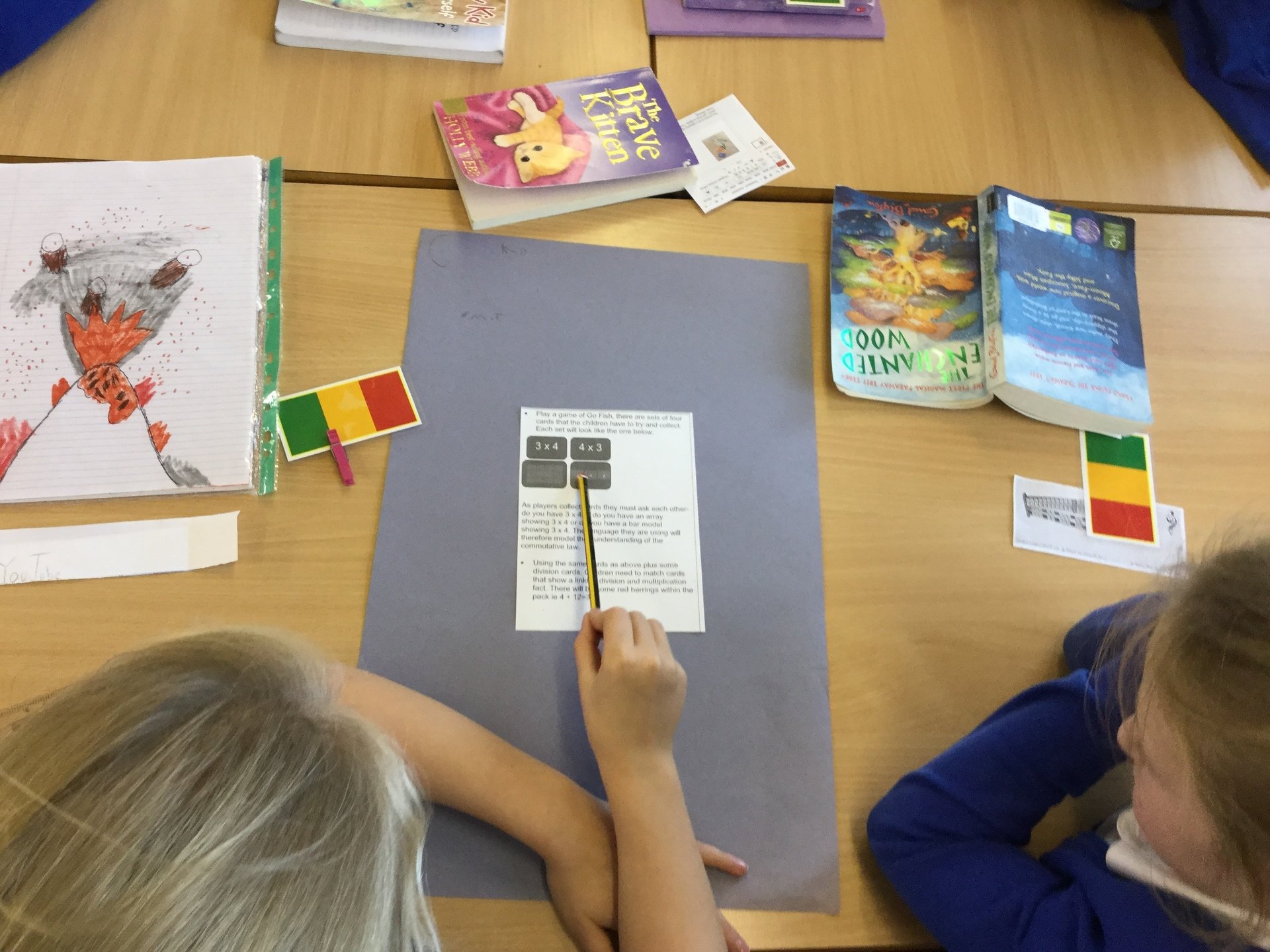 |
 |
Year 4 – Topping the lot!
In Year 4, we have been focusing on the aspects of place value, addition and subtraction, multiplication, fractions and measures. We have explored maths in a number of different ways such as: games, number challenges, computer-based challenges, songs and reasoning tasks.
We even had to arrange the toppings onto the pizzas for the pizza shop. The children have been working very hard on their recall of times table facts and they are getting very quick – you can hear us singing and practising on the way to assemblies. We also had the opportunity to join in the math problem solving day and were very engaged in a thoroughly engaging challenge.
Year 5 – Yet more problem solving!
We love a bit of practical problem solving because we love to talk in year 5! We were set several challenges by our visitors, found some answers and worked very hard to get close to other solutions.
 |
 |
Mrs Emmerson was impressed by our use of logic and determination throughout. Another worthwhile visit which we thoroughly enjoyed.
Year 6 – The place (value) to be? Not half!
In maths, Y6 have been very busy securing their knowledge on place value. We have also been mastering fractions and playing games to consolidate our knowledge and understanding of these.
 |
 |
Summer Term 2019
A Summer of Practical Maths at Pittington
The summer term has been a wonderful one for the children applying skills in a practical context. There have been countless excellent examples of children developing their understanding and applying their learning in a practical way. Brilliant!
Nursery children certainly ‘know the score’! After shooting hoops and impressively keeping score in their heads, the children moved on to using a scoreboard to record their successes.
It is great to see the superb skills recording information being developed further in reception class. Here are the children representing their favourite colours in a block chart. The conversations and questioning that were woven around this task are wonderful – including the children having to solve the conundrum of more blocks on the board than children in the class. The solution – some children had voted more than once! Well…..it can be hard to choose your favourite!
There is no better way to learn that actually ‘doing’ and in year 1 practical maths is in full swing where comparing capacity and weights really excited and interested the children.
One of the best things about the summer term is being able to get outside and learn. The children in year 2 have been developing their understanding of directional language and rotations. They took turns setting the challenge of a route to follow and instructions to get them through it.
It is wonderful to see skills acquired earlier in school being developed by older children and here is a great example of the children in year 5 using directional language too with more complex instructions and degrees too!
Spring Term 2019
Spring into Maths at Pittington this term!
Year 5 delighted the rest of the school by sharing their Soccerstarz stash with each class.
The children had to share them out equally throughout whole school and needed to find an efficient way to total, work out fraction and percentage each class would get and then divide equally. This was a great show of team work and sharing of strategies applying maths in everyday situations.
As you can see, it didn’t take long for Reception class to put them to good use in another maths context!
In Year 3, practical maths is the buzzword and they have been using polydron to construct their own 3D shapes.
In Nursery Mr Wright really enjoyed joining the children as they created pictures using 2D shapes.
Each class has also started their own unique x tables challenge and we particularly like the Year 1 superhero x tables approach!
Autumn Term 2018
Problem Solving? No problem!
This term, all classes from Reception to Year 6 have enjoyed working with ‘The Problem Solving Company’ who specialise in creating a ‘pen free’ approach to practical maths problem solving. Each year group had their own bespoke activity and really impressed their teachers with their communication, teamwork and problem solving skills.
“The best thing was team work”
“I didn’t know shapes made other shapes”
“Great to have a chance to be a leader and set myself targets.”
“It kind of wasn’t like Maths, so it made it more fun.”
“We learned to problem solve and keep trying if we couldn’t do it”
“It was challenging and awesome”
The knowledge and skills the children applied in these activities were wide ranging: from those based around shape and geometry to coordinates and mapping skills. The resilience shown by the children who encountered the challenges was impressive and is applied every day in the classroom giving them the confidence to approach challenging maths with a ‘can do’ attitude.
Marvellous Maths at Early Years & Foundation Stage
We have started to use 5 frames to develop our concept of number.
We have been learning about numbers around us. We have been voting and counting the number of votes for our favourite books, forming our numbers wherever we can and organising numbers into the correct order.



